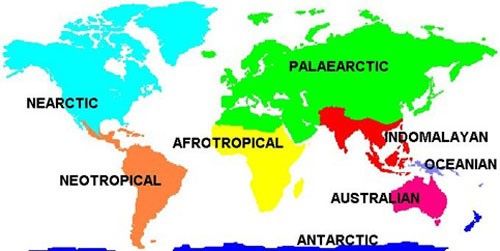The Featured Creatures collection provides in-depth profiles of insects, nematodes, arachnids and other organisms relevant to Florida. These profiles are intended for the use of interested laypersons with some knowledge of biology as well as academic audiences.
Introduction
Ostracods are a class of small crustaceans that inhabit both saltwater, freshwater, and damp terrestrial environments. There are approximately 8,000 extant species of ostracods. Non-marine ostracods belong to the Order Podocopida, which is comprised of the superfamilies Cypridoidea, Darwinuloidea, and Cytheroidea (Thorp 2015). They are commonly known as seed shrimp due to their small size, typically smaller than a poppy seed or up to 1 mm. Their carapace, the upper shell of crustaceans, is bivalved, giving it the common name mussel shrimp.

Credit: Lyle J. Buss, UF/IFAS
Cypridopsis vidua is a species of seed shrimp found in Florida that has a worldwide distribution; it is found in freshwater environments around the world. Members of this species feed on periphyton, which is a combination of algae, cyanobacteria, heterotrophic microbes (bacteria, yeast, and molds), and detritus (dead organic material) attached to aquatic vegetation, such as the green alga, Chara fragilis (Roca et al. 1993). The defensive techniques of Cypridopsis vidua are quite intriguing. When exposed to water from aquarium tanks that contained fish, Cypridopsis vidua was able to detect small chemical traces of the fish and retreat into hiding.

Credit: Lyle J. Buss, UF/IFAS
Distribution
The Palearctic region contains the highest diversity of seed shrimp, followed by the Afrotropical and Australian regions. Freshwater seed shrimp can be found in lakes, wetlands, vernal (seasonal) pools, oxygenated groundwater, and streams, whereas other ostracods live in marine environments. One unusual species of semi-terrestrial Ostracoda lives in damp areas of leaf litter or on mosses near waterfalls (Martens et al. 2007).

Credit: Used with permission from Earth Online Media
Description and Life Cycle
Seed shrimp use a variety of methods for reproduction and can reproduce either sexually or asexually via parthenogenesis (Martens et al. 2007). Parthenogenesis allows for females to produce young without fertilization. Some species of seed shrimp lay their eggs on the surfaces of aquatic plants or in the water, whereas some species may brood their eggs internally and release living larvae after the eggs have hatched internally. Seed shrimp that inhabit vernal pools produce cysts that can survive dry periods; these cysts hatch once there is enough water. Cysts are eggs that are suspended in a membrane-bound fluid. This coating allows the eggs to survive extended dry periods.
The most common families of freshwater ostracods include Cyprididae, with 1,000 species, and Candonidae with 550 species (Martens et al. 2007). They inhabit benthic (floor) regions of water bodies and are found in periphytic communities. Organisms that are periphytic live on the surfaces of rooted aquatic vegetation.

Credit: Lyle J. Buss, UF/IFAS
To view the details of seed shrimp anatomy requires a microscope with at least 40x magnification. With the naked eye, the seed shrimp look like a dark swimming dot and are less than a millimeter in length, with few external identifying characteristics.

Credit: Robin J. Smith, Ostracod Research at the Lake Biwa Museum
As a Host
Non-marine ostracods are known to serve as a host for the endosymbiotic (lives internally in seed shrimp) bacteria Cardinium (Schön et al. 2018). Endosymbiotic bacteria live in a mutualistic relationship within other organisms. Cardinium bacteria are commonly found in the reproductive tissue of arthropods, mites, and spiders. Cardinium have been shown to cause feminization of the male host organism (Nakamura et al. 2009). Researchers recently discovered a new strain of Cardinium in all three superfamilies of non-marine ostracods through DNA sequencing. This strain of Cardinium found in the ostracods resembles those found in Diptera and Nematoda (flies and nematodes). Researchers have yet to observe horizontal transmission of this bacteria between ostracod and non-ostracod hosts (Schön et al. 2018).
Selected References
Martens K, Schön I, Meisch C, Horne DJ. 2008. "Global diversity of ostracods (Ostracoda, Crustacea) in freshwater." Hydrobiologia 595: 185–193.
Nakamura Y, Kawai S, Yukihiro F, Ito S, Gotoh T, Kisimoto R, Yanase T, Matsumoto Y, Kageyama D, Noda H. 2009. "Prevalence of Cardinium bacteria in planthoppers and spider mites and taxonomic revision of "Candidatus Cardinium hertigii" based on detection of a new Cardinium group from biting midges." Applied Environmental Microbiology 75 (21): 6757-6763. DOI: 10.1128/AEM.01583-09.
Roca JR, Baltanas A, Uiblein F. 1993. "Adaptive responses in Cypridopsis vidua (Crustacea: Ostracoda) to food and shelter offered by a macrophyte (Chara fragilis)." Hydrobiologia 262: 127–131.
Schön I, Kamiya T, Berghe TV, Broecke LV, Martens K. 2018. "Novel Cardinium strains in non-marine ostracod (Crustacea) hosts from natural populations." Molecular Phylogenetics and Evolution 130: 406-415. DOI: 10.1016/j.ympev.2018.09.008.
Thorp JH, Rogers DC. 2015. Thorp and Covich's Freshwater Invertebrates. 4th Edition. Elsevier Science, New York, NY. pp. 470–486.